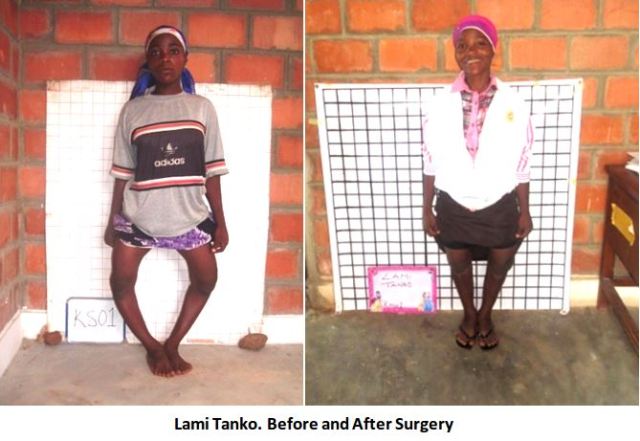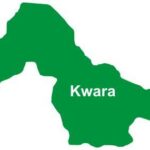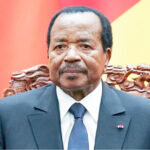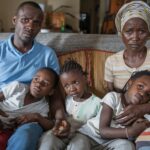Teen Abigail Sama’ila recalls years when she couldn’t go to school because she had rickets, was in pain and ashamed to go out or play with other children.
That was until she got on the list of Kaduna’s children in line for rickets therapy. Now she is back out with her peers, has finished secondary school and is looking to become a lawyer.
- Reps summon TCN boss, Head of Service over ‘skewed recruitment’
- PHOTOS: Presentation of Shettima as Tinubu’s running mate

She is not alone. Lami Tanko grew up with severe genu varum, a form of rickets that forced her legs to curve outward at the knees. A surgery to correct the condition guaranteed her return to school—and now she is graduating in health technology.
But there is nothing magical about Abigail and Lami recovering and returning to school. Their recovery comes from their enrolment in a rickets treatment project the Hope for the Village Child Foundation has been running for years.
It is all about identifying children with rickets, putting them on a daily dose of 1000mg of calcium for up to two years. In the case that the rickets-related deformity isn’t corrected after two years of calcium therapy, surgery is the last resort.
Rickets affect bone development in children. It causes bone pain, poor growth, and leaves the bones soft and weak, leading to deformities. It is in itself caused by a deficiency in vitamin D, calcium or phosphate.
Plethora of bendy bones
The condition has been manifesting in children in Kaduna with different forms of severity.
Genu varum forces the legs into a bow shape, like Josiah Victor had until his surgery.
Godiya Musa had the “windswept” variety—in which both her legs were bent out to her left.
Cost for the surgery has risen from N400,000 to N1.1 million, and their parents are contributing N21,000.
Both are growing up with much straighter legs after a corrective surgery. A total 176 surgeries so far have been successful.
Godiya Jonah’s legs didn’t get so bendy as to need surgery. She was young when the bowing was noticed, and placed on calcium therapy.
It costs N3,700 a day. But some 2,100 children have successfully had their rickets corrected without surgery.
“In all this, children go through pains. It affects the distance they cover, other children call them names,” says Sister Juliana Ekwoanya.
“In school, they are stigmatized. When they are able to go to school but are incapacitated, parents make them stay home. So it affects their education, peer group interaction, everything about the child.”
A longstanding problem

The Godiyas and Josiahs are the present-day face of a problem that came under the radar when HVCF founder Margaret Mama opened a small clinic for women and children in the Jakaranda area where it started in the 1990s.
The clinic drew in children with rickets complaining of bone pain, aged anywhere between eight and 15. Those were the ones who could walk.
She visited them at their homes in Pambawa and found even more children with rickets, among them young children affected from their time in the womb of their mothers.
Pregnant women who had previously had a child or children with rickets were placed on calcium supplement—spanning from their sixth month of pregnancy till six months after they are delivered. The idea was to help babies get calcium during pregnancy and in breast milk.
Working with women started in 2018. Since then, 150 pregnant women have been tracked—and only five children presented mild forms of rickets, easily corrected with calcium supplement.
After its start in Chikun council area of Kaduna, the project has expanded into four others–Jaba, Kachia, Jema’a and Kagarko. But it is still struggling to be owned.
Falling through the cracks
Keeping the numbers steady is a limitation. The children on the programme stay only as long as is needed for their therapy to be complete.
Once the calcium supplementation is done with and the deformity corrected, they fall off the project’s radar.
Some have gone on to school in communities outside where they got calcium supplements.
Others have been swept up in the displacement that follows spates of start-and-stop insecurity that’s besieged the state over years. Only a couple hundred children are still actively being tracked.
Since the 1990s, some 4,257 children have benefited from the rickets project—most in Kaduna alone. It points to an existing prevalence of the condition.
Several investigations have been on, locally and by international experts—into soil, water, food, bone fragments, blood, urine and saliva—to understand why affected children lack calcium, despite the abundance of sunshine needed for Vitamin D to activate calcium.
A 2005 research, 15 years after the project started, compared two villages—one affected by rickets, the other not—to conclude that the condition was not related to reduced calcium content in plants.
A great deal is still not known about rickets, leaving a knowledge gap that requires more research and attitude change for communities and health authorities.
No one’s watching

Even with partnerships, corrective surgery for rickets now stands at around N1.1 million, and calcium therapy needs around N3,700, much of it funded by donors to HVCF. For the latest batch of 110 children on therapy, that’s N3,700 in 110-fold–a total N407,000 a day. Parents pay only N400 per child.
It is expensive, but the condition is not contagious—and therefore not an emergency or a public health concern, explains Michael Babanyara, a field officer working with the children.
The project has gone through several packaging styles to get the attention of the government, visiting four different governors, beckoned on first ladies to take on rickets as their pet projects, met with unions of orthopaedic surgeons, even shared data with international health organisations.
“They have not taken it as urgent,” says Babanyara. “It is money intensive—maybe that is one reason they are not taking it.
“We have tried to sell it to first ladies to take as pet projects but they visit with two bags of rice, but that is not what we want. Some say to meet local governments, they are going to pay bills for children in hospital but before you know it they are out of office. We have tried advocacy in different ways. We brought the children to the government but there was no interest. It is not a part of their interest.”

Interest is what is needed to make a change, says Ekwoanya. “It is our leaders having interest in the lives of these children. These children are from the poor of the poor.
“Even here some parents still see it as hereditary—they say their great-grandfathers, grandfathers and fathers had it and it didn’t kill them. So long as the child is able to roll gradually until they get where they can. They don’t see it as a major challenge, except for those who are almost completely crippled and can hardly get up—that’s when people see it. Or when you see children with ‘windswept’ or twisted bones, and you see the deformity looks bad enough to even scare other children from getting close.”
But for children who have directly been impacted, it is more than just an opportunity cost in expenses and family choices. It is about survival and quality of life quality.
With a scholarship to see her through tertiary education when she graduates in health technology, she has a future to walk toward.
“I cannot thank you enough for rescuing me from a life of pain and misery, and adding quality to my life,” she says.
This story was produced in partnership with Nigeria Health Watch through the Solutions Journalism Network, a nonprofit organisation dedicated to rigorous and compelling reporting about responses to social problems.

 Join Daily Trust WhatsApp Community For Quick Access To News and Happenings Around You.
Join Daily Trust WhatsApp Community For Quick Access To News and Happenings Around You.


